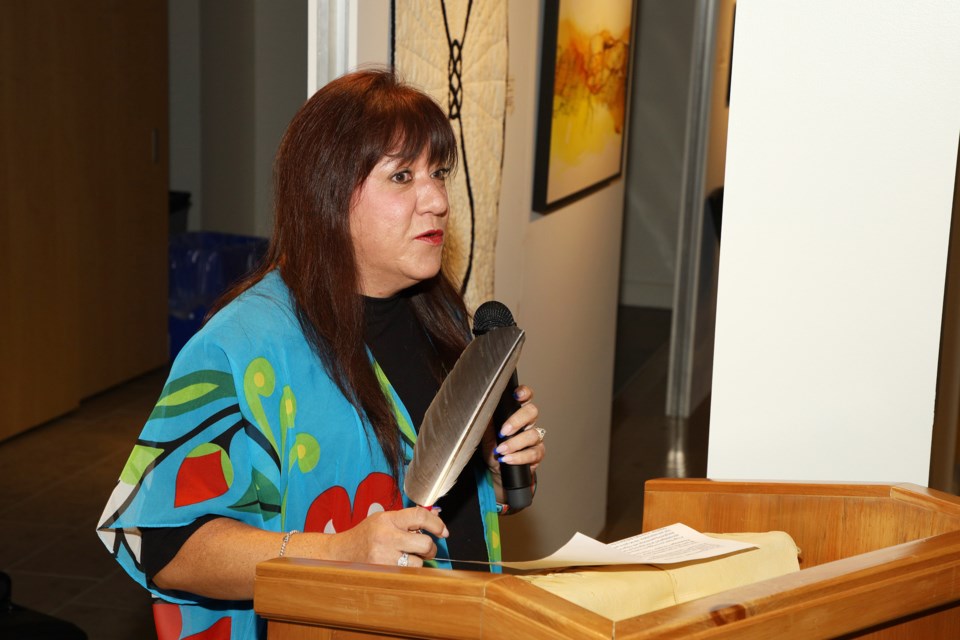Land acknowledgements have become a routine part of our public life, a regular feature at cultural and political events, concerts, and even ribbon-cuttings.
But what do these words mean? Who wrote them? What do they convey?
Those are questions Dr. Ruth Green, an associate professor in the School of Social Work at York University, is asking the community to consider ahead of a talk later this month at the Aurora Public Library (APL).
Dr. Green, a member of the Haudenosaunee nation, will explore these questions at APL on Thursday, April 18, at 7 p.m., encouraging a move away from land acknowledgements toward solidary statements.
Ahead of the talk, she shared as much as land acknowledgements are ostensibly to further efforts toward Truth and Reconciliation, it’s time for a “re-imagining” of how to “build these relationships between Indigenous and non-Indigenous people.”
“When people are just learning [about this history] and they hear these land acknowledgements, they think that is enough,” says Green. “How do you build a relationship where people can say, ‘I am going to acknowledge this territory, but I am also going to acknowledge who I am in this territory?’ A land acknowledgement can’t just be a script because then it becomes performative; instead of being performative, how do non-Indigenous people understand themselves as guests in Indigenous territory and how do we make a commitment to do better?
“Dr. Cindy Blackstock says she shares dreams of a generation of Indigenous children who don’t have to heal from their childhood and a generation of non-Indigenous children who don’t have to apologize. We’re not going to do it coming at each other with barbs; we’re going to do it by caring.”
In doing so, Green says she has to remember who she is.
History, she says, wanted to “make us disappear” and Green describes herself as “the grandchild of Indigenous people they couldn’t kill.”
“My grandfather was in a residential school and my grandmother was in Indian hospitals; she was experimented on. My mom escaped the child welfare system by being thrown out of a window. This is my life.”
All of us have “sat in spaces where our homes don’t feel peaceful, be it when we were teenagers and pissing off our parents; be it when we moved into our first apartment and had horrible roommates; we went through a break-up of an intimate relationship – we all know what it feels like to be in a home without peace. If you understand that, that’s what it feels like to be an Indigenous person every day, times all of us.
“I can try and come at it in ways that individuals can connect with their own lived reality, but also see the political and national implication. That’s how I take this from being a land acknowledgement to somebody saying, ‘I need to do these things to stand in solidarity; I need to learn more; I am going to write letters to the paper, to the prime minister, to members of Parliament, to my mayor…. I am going to say we need to do better.’”
When Green is in a situation where a land acknowledgement is said, she often asks the host who wrote it. The answers are interesting and varied from an organization “asking a few Indigenous community members to work on it,” to “We got it off Google” or, “We read a bunch off Google and wrote it ourselves.”
That base of knowledge, she says, comes from Indigenous-led writings and that “took emotional labour” and “it’s important we don’t lose sight of the fact Indigenous people did the work to get the land acknowledgement there.”
“It’s important to stand and do it more than just a script – who are you in relationship to that land acknowledgement? How do you understand your roles and responsibilities to the treaty people you’re in?”
“It should not be our work anymore. We did the foundation and a lot of spaces and places have that access to that Indigenous person’s labour, but that is going to tell you how to build it yourself.”
It will be a learning journey, she says, and nobody is going to get it right the first time.
No non-Indigenous person she’s met nailed “Haudenosaunee” the first time just by looking at it. But Green says “we have now had enough time where people should be able to say the name of my confederacy.”
“I have asked many, many language-speakers across Canada and the U.S., ‘What is the word for ‘mistake’ in your language? I get virtually the same answer every time, ‘Oh, there’s not really a word for mistake. It’s kind of either a ‘teaching’ or a ‘learning.’ If that is our worldview, if we don’t have a word for ‘mistake’ and people are coming with good intentions and are willing to hear if their impact is not their intention, then we can move forward.
“Canada has had a problem where their intention and their impact has not always been to the benefit. If somebody’s intention is to the benefit and their impact is not, but they are willing to hear it, I am willing to talk to them.”
To be a part of the conversation on April 18, visit bit.ly/3SA3Gdz.
Brock Weir is a federally funded Local Journalism Initiative reporter at the Auroran



